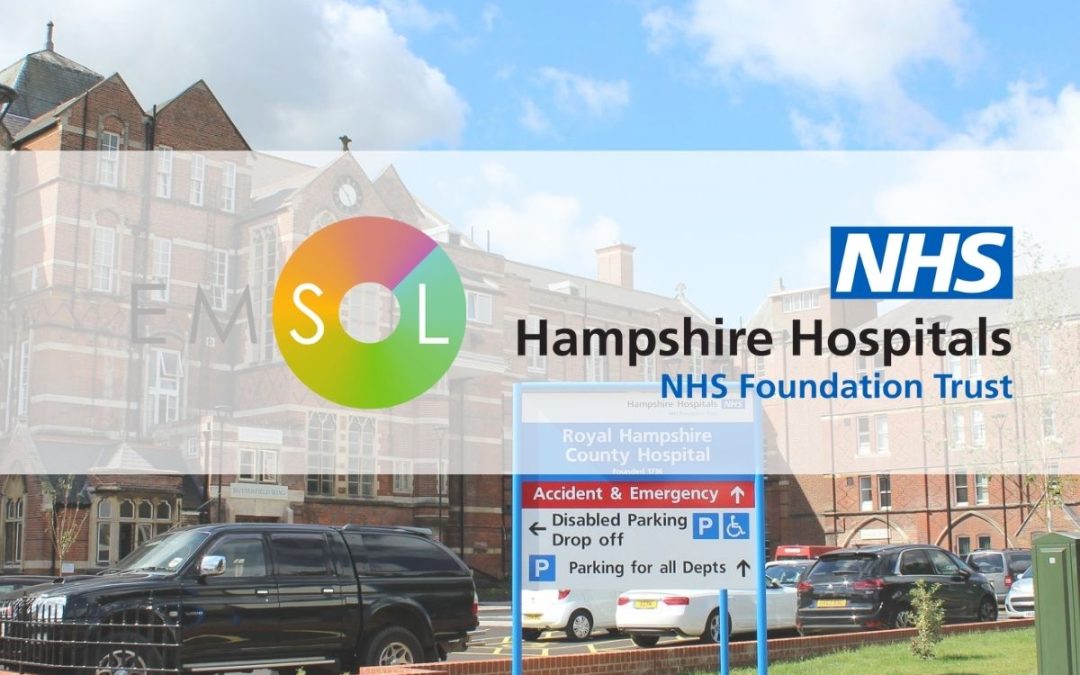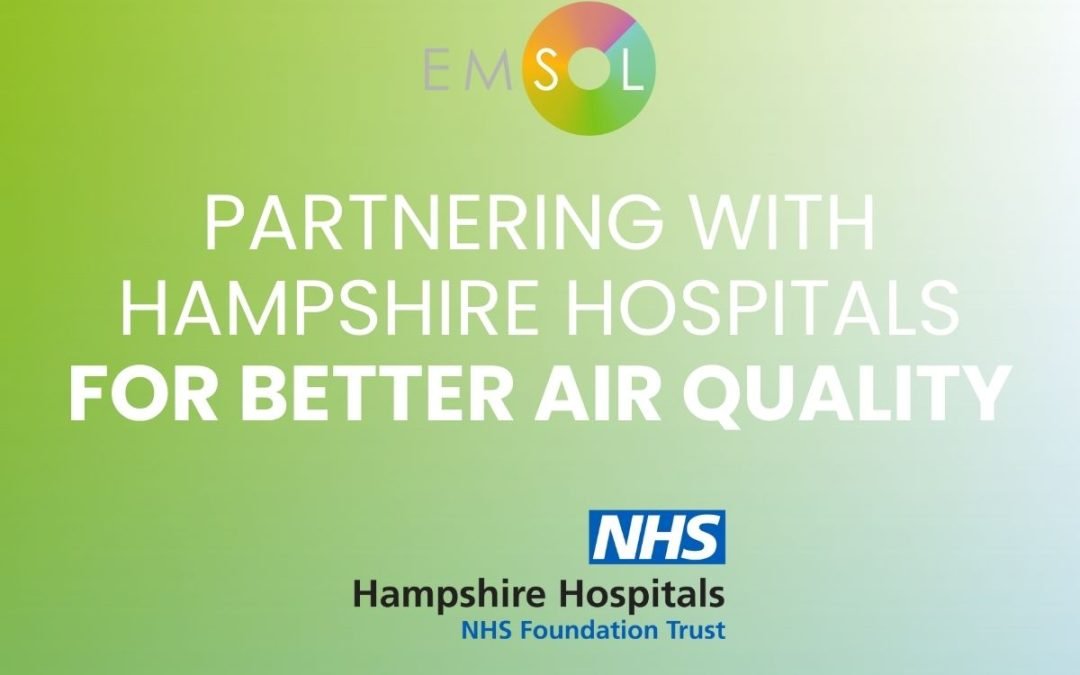Pollution from air, noise, and light has become a major public health issue globally. In the UK alone, it is estimated that air pollution contributes to over 40,000 early deaths every year. The NHS bears a huge burden of the impact of poor air quality, from pollution-caused disease, higher rates of respiratory illnesses, cardiovascular disease, cancer, and adverse mental health outcomes.
Recognising the threat pollution poses to community health, the NHS in England has made commitments under its ‘For a Greener NHS’ program to significantly reduce its environmental impact and transition to sustainable models of care delivery. A key part of this effort is the mandated ‘Green Plans’ that detail how individual NHS trusts and integrated care systems will contribute to the wider goal of the health service achieving net zero emissions by 2040.
These Green Plans allow for localised strategies and variation in approach, while working towards the overarching national targets. Through local monitoring, target-setting, and implementation of emissions reduction measures, the NHS aims to mitigate its contributions to pollution across all levels of the health system.
Air Pollution – A Priority Area
Air pollution has been designated a top priority area for the NHS in the Green Plan. The key air pollutants driving negative health impacts are particulate matter (PM2.5/PM10), nitrogen dioxide (NO2) and ozone (O3). Long-term exposure to these pollutants can reduce lung function, increase risk of lung infections and trigger asthma attacks.
Under its ‘Delivering a Net Zero National Health Service’ strategy, the NHS has made commitments to reduce air pollutant emissions from its transport fleets, heating/cooling systems, and supply chains. Specific goals include:
- Requiring all new lease/purchase vehicles to be ultra-low emissions (e.g. hybrid or electric)
- Phasing out emissions from coal/oil burning on NHS sites by 2028
- Cutting business mileage and fleet emissions by 20% by 2023/24
The NHS Long Term Plan has also called for all trusts to reduce air pollution through accelerated uptake of low emissions vehicles, consolidated suppliers, and cleaner heating/cooling systems.
How NHS Trusts Have Been Taking Action
Hammersmith
Imperial College London is collaborating with Imperial College Healthcare NHS Trust and Hammersmith & Fulham Council on an air quality improvement initiative. The multi-year partnership claims to analyse local pollution data to inform policies, while also educating the wider community about environmental risks. The groups are exploring how to leverage technology, public engagement, and behavioural change to reduce emissions at a borough level.
Great Ormond Street Hospital
Great Ormond Street Hospital (GOSH) for Children has implemented several pioneering initiatives on its premises to mitigate patient, staff, and visitor exposure to air pollution.
In 2019, GOSH launched the first ever Clean Air Hospital Framework to systematically monitor on-site air quality and make the hospital environment as pollution-free as possible. This includes a weekly Play Street event which opens up a road adjacent to the hospital as a car-free zone for children to play outdoors.
Building on its clean air commitments, GOSH became the first hospital in London to declare a Climate and Health Emergency in 2021. It has set ambitious Net Zero targets to minimise its carbon footprint. Over 30 GOSH staff members also cycled to the COP26 climate meeting to raise awareness.
Clean Air Day
Many NHS trusts have leveraged the annual Clean Air Day events in June to educate staff and community members about local air quality issues. Guys and St Thomas’ Hospital and Better Bankside organised a community street party in 2022 to bring visibility to pollution reduction efforts. Similar awareness drives and events are being planned across trusts to mobilise action around air pollution.
Guy’s and St Thomas’ NHS Foundation Trust
As innovation leaders in sustainability, Guy’s and St Thomas’ NHS Foundation Trust has made a firm commitment to reduce their environmental impact and aims to be an NHS leader in environmental sustainability.
To enable targeted emissions reductions, the Trust partnered with cleantech firm EMSOL to gain granular visibility into pollution levels across its hospital sites. EMSOL installed sensors at loading bays in Guy’s Hospital and St Thomas’ Hospital to continuously monitor air quality and connect it with real-time analytics on vehicle movements and timings.
By combining air quality data with traffic insights, EMSOL was able to pinpoint specific delivery vehicles causing pollution spikes. Over the pilot period from April 2021 to May 2022, EMSOL accomplished the following:
- Identified the most polluting delivery vehicles to address through fleet upgrades
- Attributed pollution events to certain vehicle types/ suppliers for further engagement
- Analysed site-specific pollution patterns by time of day to define optimal delivery windows
- Ensured no exceedances of UK air quality standards, although WHO standards were exceeded
Based on the tangible pollution insights gained, Guy’s and St Thomas’ NHS Foundation Trust agreed a further commercial deployment of EMSOL’s technology across more hospital sites. Read more about the project here.
According to Tanja Dalle-Muenchmeyer, Trust Air Quality Manager:
“As an NHS Foundation Trust and anchor institution, we are keen to reduce our contribution to poor local air quality and its effects on human health. The EMSOL technology will help us understand local pollution levels, its sources and identify targeted action we can take to improve the situation.”
Following the trial project, EMSOL won a tender with Guy’s and St Thomas’ to continue monitoring. Showcases the Trust’s ongoing commitment to clean air.
The EMSOL platform delivers on NHS sustainability priorities around supply chain visibility and builds data and evidence as a basis for hospitals to reduce environmental impact. Its model of NHS-specific innovation epitomises the role of technology partnerships in enabling health systems to achieve net zero ambitions.
The NHS is Leading By Example
The NHS is leading by example in prioritising pollution mitigation as a public health imperative. Through the mandated Green Plans, trusts and integrated care systems now have a framework to translate national sustainability targets into local emissions reduction initiatives tailored to their sites. Pioneering partnerships with innovators like EMSOL also showcase the power of technology to provide granular visibility over pollution sources, enabling data-driven action towards clean air and environmental justice for all communities.
As the examples highlighted demonstrate, the path to a greener health service will be paved by scalable climate action rooted in preventative care principles – curbing emissions at source before they translate into adverse health outcomes. By using sustainability as a catalyst for transformative change, the NHS lives up to its founding promise – first, do no harm. Tackling pollution is integral in delivering equitable access to clean air as a basic healthcare right.





